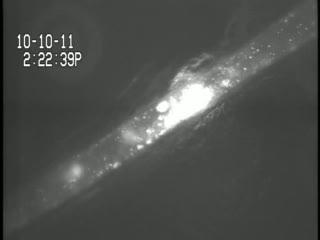The new shear-activated nanotherapeutic has the potential to overcome these efficacy limitations. By targeting and concentrating drug at the precise site of the blood vessel obstruction, the Wyss team has been able to achieve improved survival in mice with occluded lung vessels with less than 1/50th of the normal therapeutic dose, which should translate into fewer side effects and greater safety. This raises the possibility that, in the future, an emergency technician might be able immediately administer this nanotherapeutic to anyone suspected of having a life-threatening blood clot in a vital organ before the patient even reached the hospital.
The inter-disciplinary and inter-institutional collaborative research team, which was led by Wyss Founding Director Donald Ingber M.D., Ph.D., and Wyss Technology Development Fellow Netanel Korin, Ph.D., also included Wyss postdoctoral Fellow Mathumai Kanapathipillai, Ph.D., as well as Benjamin D. Matthews, Marilena Crescente, Alexander Brill, Tadanori Mammoto, Kaustabh Ghosh, Samuel Jurek, Sidi A. Bencherif, Deen Bhatta, Ahmet U. Coskun, Charles L. Feldman, and Denisa D. Wagner from Brigham and Women's Hospital, Children's Hospital Boston, Harvard Medical School, the Harvard School of Engineering and Applied Sciences, and Northeastern University. Ingber is also the Judah Folkman Professor of Vascular Biology at Harvard Medical School and Children's Hospital Boston, and Professor of Bioengineering at Harvard's School of Engineering and Applied Sciences.
Commenting on the work, Ingber noted that "the vascular nanotherapeutic we developed that selectively becomes activated in regions of high shear stress, much like living platelets do, is a wonderful example of how we at the Wyss Institute take inspiration from biology, and how biomimetic strategies can lead to new and unexpected solutions to age-old problems that existing technologies can't address."

A blood clot within a mouse artery disappears following the injection of a clot-busting, shear-activated nanotherapeutic. The bright areas are fluorescent-labeled platelets.
(Photo Credit: Wyss Institute)

The shear-activated nanotherapeutic breaks apart and releases its drug when it encounters regions of vascular narrowing.
(Photo Credit: Wyss Institute)
Source: Wyss Institute for Biologically Inspired Engineering at Harvard